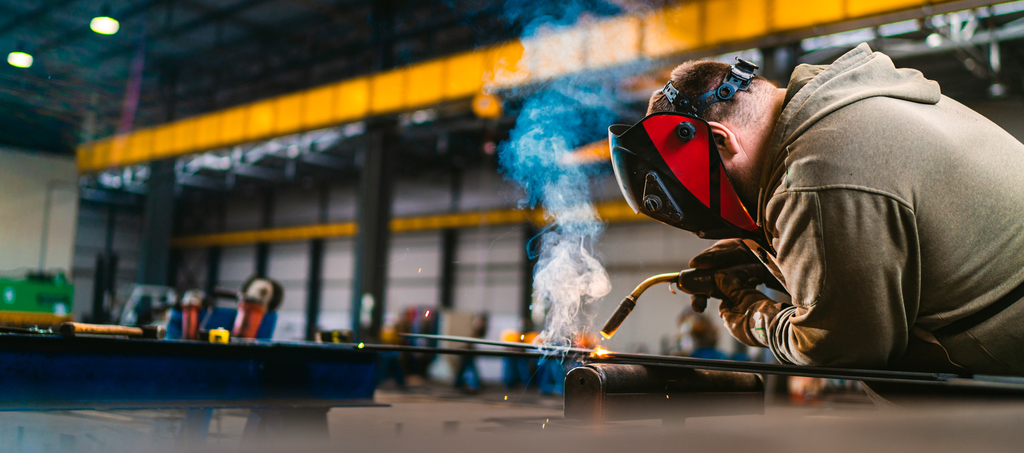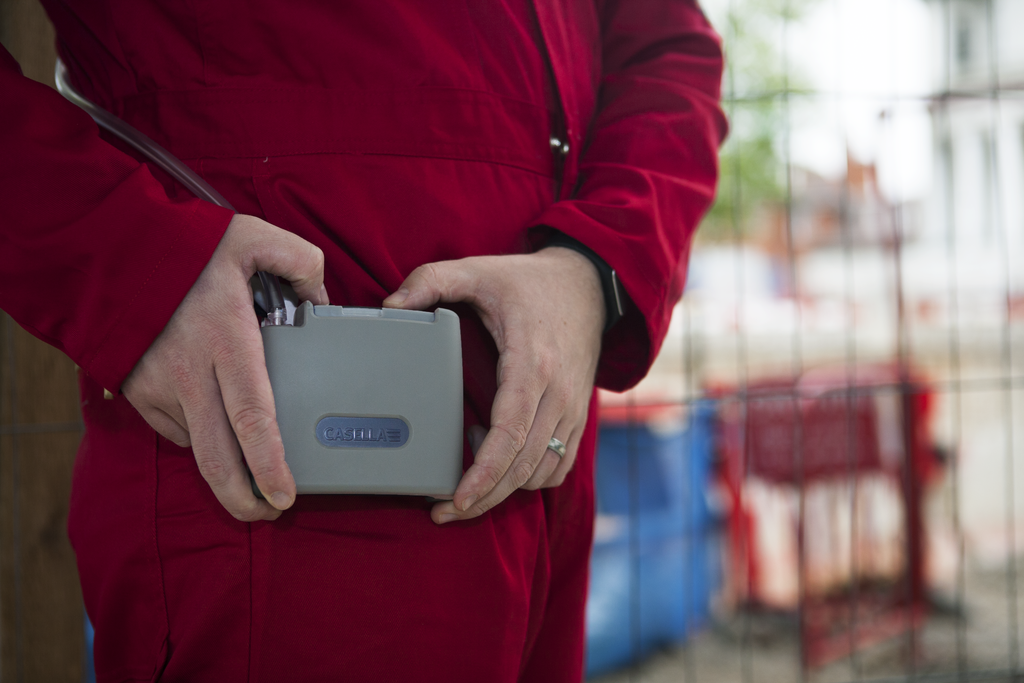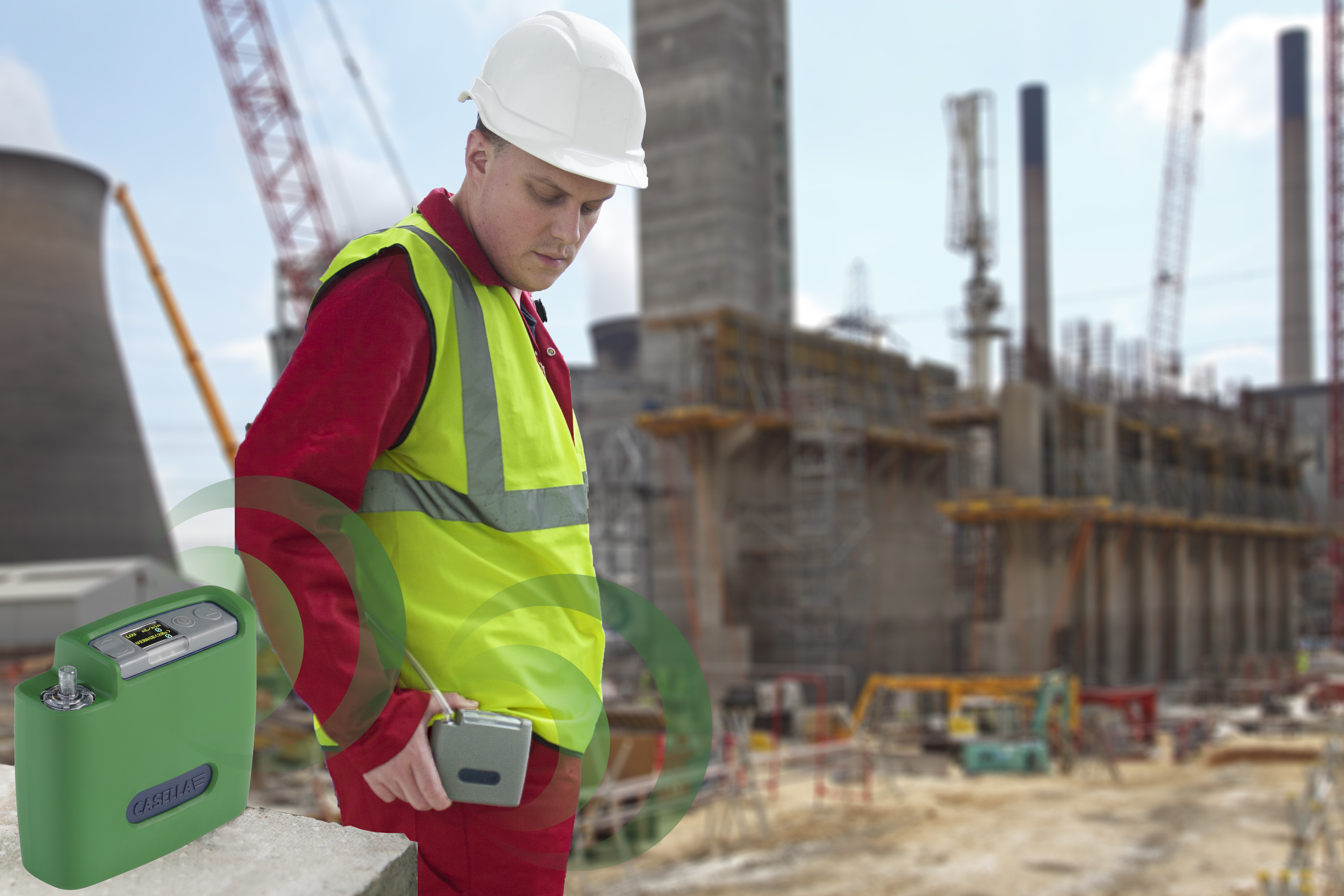
Kelly Rose
Editor

Kelly Rose
Editor
Tim Turney provides an overview on best practices for air sampling at work to advise employers on best practice for safety and compliance.
EXPOSURE TO an excessive amount of any type of dust created in industrial settings can cause problematic respiratory issues. Some, however, can be far more deadly than others, even in smaller quantities. The Health & Safety Executive (HSE) estimates that over 500 construction workers a year die as a result of previous exposure to silica dust.
Indoor environments often exhibit air pollutant concentrations two to five times higher than the outdoor equivalents. But in the workplace, dust can be a regular annoyance at best and often a deadly hazard at its worst.
Most businesses in manufacturing, extraction, food processing, engineering and construction will perform dust generating activities, the first step is to identify these processes and understand the substances involved and aim to control the level of exposure and protect those exposed. The HSE orders that employers must appropriately ventilate any enclosed areas of their workplace, an especially important directive for sites that generate potentially harmful dusts, gases or vapours. The HSE further protects workers through the Control of Substances Hazardous to Health Regulations (COSHH) that imposes Workplace Exposure Limits (WELs) for hazardous substances.
Regularly breathing dust or other harmful substances can cause diseases like lung cancer, asthma, Chronic Obstructive Pulmonary Disease (COPD) and silicosis, depending on the substance involved. Many work processes can create dust, examples include cutting, crushing, milling, grinding, sawing and drilling. It is only after the measurements have been taken can a reasonable judgement about what control measures are needed can be made, it is not always clear that there is an inherent risk present since the most dangerous types of dust are invisible to the naked eye. Needless to say, if there are obvious levels of dust present, its likely there is a dust issue in the workplace, and control measures should be put in place.
WELs are 4 mg/m³ (for respirable particles) and 10 mg/m³ (for inhalable particles), but the more toxic a dust is the lower exposure limit. In this instance, inhalable dust is any dust that can be breathed into the nose and mouth and respirable dust penetrates beyond the terminal bronchioles into the gas-exchange region of the lungs. Note that getting an employee’s exposure level to just below the exposure limits is not enough, and reducing exposure to as low as is reasonably practicable (ALARP) is required.
Know the process
Many dusts have specific Workplace Exposure Limits (WELs), and many dusts are a mixture of different substances, some of which are covered by the general dust exposure limit and others by their own WEL.
The overall dust itself might not be an issue, but there may be a toxic component to the dust so always check and use up-to-date information, such as material safety data sheets. For example, a metal being grinded may have something like nickel or chromium in it, in which case the dust produced must be controlled to a much greater degree.
Sometimes, it can be obvious that there is an unhealthy volume of dust in the workplace. Large clouds of dust being constantly generated will be visible to the naked eye and efforts should be made to minimise the prevalence. However, as the most dangerous, small particle types of dust are invisible, air sampling in this case will help quantify the risk.
A risk assessment should be performed, sufficient to identify the level of danger imposed by dusts or other airborne hazards, including information on the hazardous nature of the dust, the type of exposure and how the exposure occurs. Details of the controls intended to be used need to be recorded as well as emergency procedures, if necessary.
Sampling
Exposure limits are based on and individual persons exposure, rather than an ‘area’ measurement, so the best way to guarantee the safety of employees is to use personal air sampling pumps and implement control measures from the results.
Most personal air sampling pumps are Intrinsically Safe (IS) rated but it is important to check the pump’s rating to ensure it is suitable for use in the facility that it will take a sample from, if flammable atmospheres are present. The pumps must also adhere to the latest international standard for air sampling pumps. Compliance to ISO 13137 ensures accurate flow performance amongst other performance criteria, ensuring accurate sampling and meaning it won’t be necessary to have to repeat measurements.
When selecting the pump intended to be used for sampling, design characteristics like robustness and comfortability for the wearer must also be considered. The pumps should also allow freedom of movement and be unobtrusive so that workers can conduct their duties unimpeded.
Before use, pumps must be calibrated using a representative sample. They should also be checked at the end of the day to make sure flow has not deviated by more than 5%, if it has there may be a leak or another malfunction.
Sampling procedures should be designed to ensure accurate and consistent collection of dust concentration samples that correctly reflect the dust levels at the specified sampling locations and times. Measured concentrations are then used to calculate the eight-hour exposure which is compared to the WEL.
Control hierarchy
In controlling dusts, the usual risk control hierarchy applies:
Eliminate dust generating processes where possible
Change the process to emit less dust
Enclose the process so that the dust does not escape or extract dust near the source using local exhaust ventilation (LEV)
Have as few workers in harm’s way as possible
Provide respiratory protective equipment (RPE) such as a respirator
The hierarchy is put in place to effectively control risk to all workers and anyone else that could be affected. If it is possible to alter the process or use materials without a toxic component, or in a form that doesn’t generate exposure, it’s better than having to control the dust. Entirely removing the process is, naturally, the best way to eliminate the risk to employees but this is often unrealistic for some industrial businesses.
When it comes to the selection and installation of Local Exhaust Ventilation (LEV) systems, it's crucial to understand several key factors so it is prudent to engage the services of a specialized LEV installer. An LEV system must be well maintained and people training on its use for it to be effective.
Where LEV systems may not be reasonably practicable, other methods of dust limitation should be explored, damping down materials where permissible is one option, although such a technique can itself generate dust if it is not used properly. Some tasks can be automated, if so, the areas in which these processes occur can now be totally or partially segregated to reduce the number of people exposed.
The final stage in the hierarchy of control is providing workers with PPE, this stage should only be observed once all options of the previous stages of the hierarchy have been exhausted. Respiratory Protective Equipment (RPE) takes many forms and thus employers should ensure that the equipment they select is fit for purpose.
Knowing the risks that workers are exposed to and appropriately controlling them is one of the most essential roles of an employer. Find out the hazards present, sample the quality of the air and implement effective control measures to preserve employees’ health and avoid the penalties for non-compliance and more importantly, protect employee health.
Tim Turney is global marketing manager at Casella. For more information, visit www.casellasolutions.com




Regent House
Wolseley Road
Kempston
Bedford
MK42 7JY
UNITED KINGDOM
01234 844100